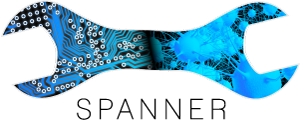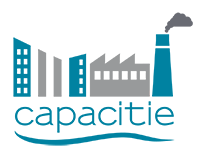Our research
Research at YRL is addressing both fundamental and practical robotics research. We work in areas ranging from fundamental issues in swarm robotic systems, to the deployment of individual and swarm robotic systems for environmental monitoring. Our work draws on expertise from over 6 departments at York, to create a highly interdisciplinary and creative approach to our research. The University has received robotics and autonomous systems related researching funding from many bodies LLoyd's Register, EPSRC, EU (Cognitive Systems and Robotics), EU (Marie Curie), Royal Society, NERC and DSTL.
Projects
An overview of some of the research projects currently taking place at YRL are given below. For more information about these and other projects, please see the relevant project pages or contact us.
Autonomous Robot Evolution: Cradle to Grave
Imagine an environment where autonomous systems (robots) are not designed by humans (or indeed designed at all) but are created through a series of steps that follow evolutionary processes. These robots will be “born” through the use of 3D manufacturing, with novel materials and a hybridised hardware-software evolutionary architecture. “Child” robots will learn in a safe and controlled environment where success will be rewarded. The most successful individuals will make available their genetic code for reproduction and for the improvement of future generations. Such a process will ultimately lead to a change in the way things are designed and manufactured. This project focuses on a disruptive robotic technology where robots are created, reproduce and evolve in real-time and real space. The long-term vision is a technology enabling the evolution of entire autonomous robotic ecosystems that live and work for long periods in challenging and dynamic environments without the need for direct human oversight.
For more information about the ARE project see here
ROBOCALC
Robocalc is a new EPSRC funded project within the Departments of Computer Science and Electronics which aims to develop a framework for integrated modelling, simulation, and programming of mobile and autonomous robots, covering, therefore, the full life cycle of development. The framework will ensure that models and simulations are consistent, and properties established by analysis and simulation are preserved in the robotic platform. The purpose is not to change current practice, but to enrich it with sound validation and verification techniques. Our challenges are sound combination of notations and techniques, automation, and scalability.
For more information on robocalc see here.
SPANNER
The human brain is remarkable in its ability to self-repair, for example following stroke or injury. Such self-repair results from a range of distributed and fine-grained mechanisms which act in tandem to ensure that the neurones (the basic building blocks in the brain) continue to function in as close to a normal state as possible.
In contrast modern electronic systems design typically relies on a single controller or processor, which has very limited self-repair capabilities. There is a pressing need to progress beyond current approaches and look for inspiration from biology to inform electronic systems design.
Recent studies have highlighted that interactions between astrocytes (a type of glial cell) and neurones in the brain provide a distributed cellular level repair capability where faults that impede or stop neuronal firing can be repaired by a re-adjustment of the local weights of connections between neurones in the brain.
This project aims to exploit these recent findings and develop a new generation of self-repairing algorithms by taking inspiration from these results to design a new generation of "astro-centric" algorithms. To achieve this we will include components representing both neurones and astrocytes in our electronic systems and model the interactions between these in such a way as to capture the distributed repair capabilities seen in the biological system.
CAPACITIE
Our new EU funded project, Cutting-Edge Approaches for Pollution Assessment in Cities (CAPACITIE) started in November 2013. We are recruiting 12 research fellows to harness a wide range of technologies including mobile phones, passive sampling devices, miniaturised sensing devices, robotics and analytical techniques such as time of flight mass spectrometry to monitor different forms of pollution.
Previous Projects
Below are the some of the research projects the lab has been involved with that have now finished.
CoCoRo Project
The CoCoRo project is a Framework 7 EU-funded project investigating cognition in underwater swarm robotics. The three-year project, which started in 2011, aims to find solutions to problems such as ecological monitoring and location of targets within underwater environments. The research at York has focussed on developing software and simulation systems for the robots, and developing algorithms which allow reliable, fault-tolerant formation of structures within the swarm. Find out more about the CoCoRo project.
SYMBRION
The SYMBRION project is a Framework 7 EU-funded project investigating hybrid swarm and modular robotic systems, that have the ability to evolve their own controllers over time to adapt to new situations. The research at York is aimed at developing self-healing modular systems, robotic systems that are capable of identify when things have gone wrong and then taking recovery measures to ensure that the robotic units can carry on working. We are also developing novel ways to assemble modular robotic systems, where the shape of the swarm is governed by environmental factors.
See videos of the robots in action in the following links:




